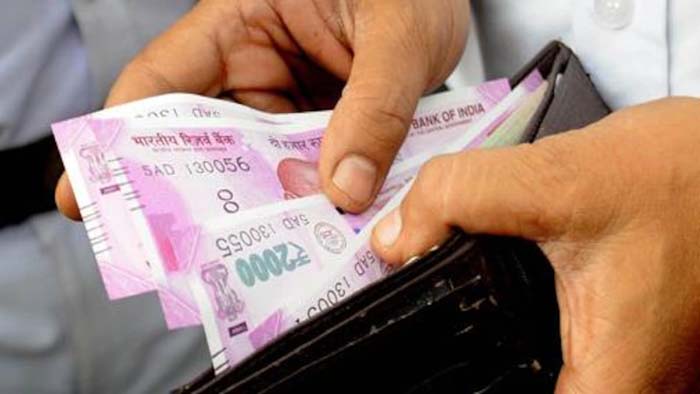The number of Rs 2,000 notes peaked at 3.36 billion units (or pieces) in 2017-18. This number dropped to 3.29 billion in 2018-19. It has fallen again to 2.73 billion in 2019-20
New Delhi, August 25:
The Reserve Bank of India’s (RBI) currency note presses did not print even one Rs 2,000 note in 2019-20. This happened because they did not receive any order to do so. The trend seems to be in keeping with a conscious decision to bring down the share of Rs 2,000 notes in total currency under circulation, which has come down from at least 50% in 2016-17 to just 22% in 2019-20.
These figures have been reported in RBI’s Annual Report for 2019-20, which was released on August 25.
RBI has also disposed a disproportionate share of Rs 2,000 notes in the soiled category. This raises questions about the government’s plan for the country’s highest denomination currency note. In January 2019, the government indicated that the printing of Rs 2,000 notes was being stopped as there was adequate supply, as reported by Economic Times in January, 2019.
“Printing of bank notes of particular denomination is decided by the government in consultation with RBI to maintain the desired denomination mix for facilitating transactional demand of public. No indent was placed with the presses for printing of Rs 2,000 denomination notes for 2019-20.However, there is no decision to discontinue the printing of Rs 2,000 bank notes,” minister of state for finance Anurag Singh Thakur told the Lok Sabha on March 16, 2020.
Rs 2,000 notes were introduced after the government announced demonetisation of old Rs 500 and Rs 1,000 notes on November 8, 2016. These two denominations accounted for 86% of the total currency in circulation when the policy was announced.
The number of Rs 2,000 notes peaked at 3.36 billion units (or pieces) in 2017-18. This number dropped to 3.29 billion in 2018-19. It has fallen again to 2.73 billion in 2019-20. The fall in number of Rs 2,000 notes in circulation is in keeping with the fall in orders for printing Rs 2,000 notes. RBI printed 3.5 billion Rs 2,000 notes in 2016-17. This came down to 151 million in 2017-18 and 47 million in 2018-19. No Rs 2,000 notes were printed in 2019-20.
RBI also seems to have disposed of a disproportionately high number of Rs 2,000 notes in 2019-20. A total of 176.8 million pieces of soiled Rs 2,000 notes were disposed of in 2019-20. Just one million Rs 2,000 notes were disposed of in 2018-19 and no Rs 2,000 notes were disposed of in 2016-17 or 2017-18. The share of disposed of Rs 2,000 notes in the total Rs 2,000 notes under circulation in 2019-20 is 6.5%. This number is just 0.6% for Rs 500 notes. Both these notes were introduced together after demonetisation.
It is Rs 500 notes which have gained at the cost of the Rs 2,000 notes. More than half of the 22 billion currency notes printed in 2019-20 were of the Rs 500 denomination. As a result of these changes in currency composition, the share of Rs 500 notes has reached an all-time high in the total currency in circulation.
A government official said on condition of anonymity that the Rs 2,000 notes were introduced in 2016 to quickly fill the gap created by demonetisation of Rs 500 and Rs 1,000 notes. It was the need of the hour.
Gradually, with increased supply of smaller notes, including new notes of Rs 100 and Rs 200, and with growing popularity of digital transactions, the urgency to issue new Rs 2,000 notes is no longer there, the official said.
“But, this does not mean that there is any move to discontinue Rs 2,000 notes,” the official added. “Increasingly, commercial banks are also using more and more smaller notes because their customers often find difficulties in getting change for Rs 2,000 notes,” the official said.




